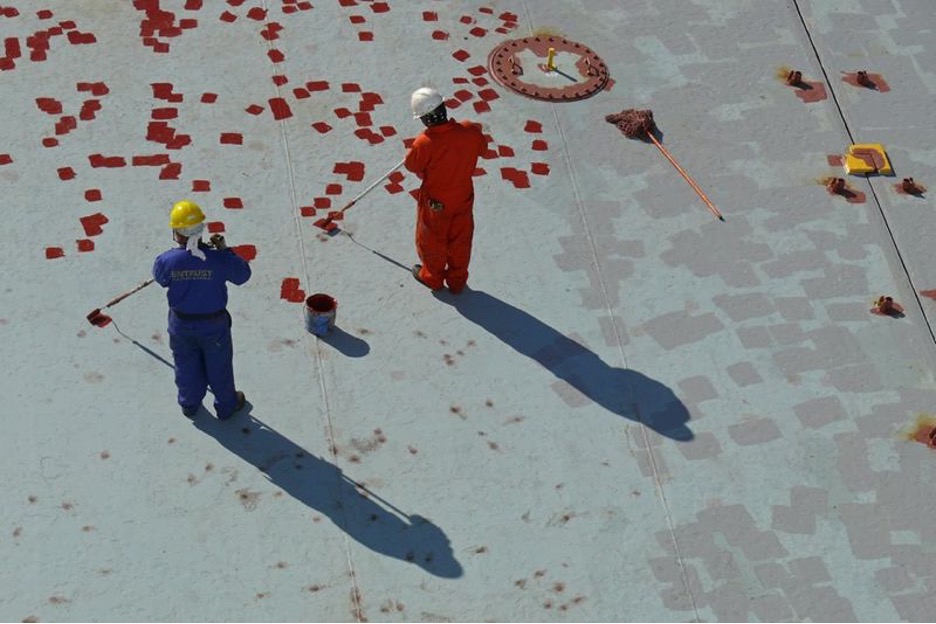International shipping makes Global trade possible by facilitating the exchange of manufactured goods and raw materials between countries. Carrying over 80% of Global trade the shipping industry is critical to the global economy.
Ships are the prime movers for international shipping and their operational efficiency is dictated by the effectiveness of the shipboard organization on the ships.
What then is Shipboard organization?
The shipboard organization is a system and structure that identifies the duties and responsibilities of every person on board the ship. A shipmaster is the legal title of the officer who heads the Deck, Engine, and Steward Department that are staffed with officers and ratings trained and licensed to operate a ship.
Organizational structures on cargo ships vary depending on the ship’s crew and the ship’s intended purpose is. However, there are some standard organizational structures that are internationally accepted. This article will describe the organizational structure that is commonly used on general cargo ships.
Importance Of Shipboard Organization.
The shipboard organization is key to a smooth and successful voyage. A well-organized ship is a safe ship. Every crew member needs to, be aware of their specific duties and tasks in order to keep the vessel running efficiently.
Crew members who are familiar with their surroundings and their responsibilities are less likely to make mistakes. In a crisis, a well-organized ship can respond more quickly and effectively.
The crew is the most important part of the organization process. They need to be organized in order to maintain the ship’s equipment and keep track of their duties. IMO Resolution A.1047 (27), Principles of minimum safe manning adopted in 2011 addresses crew requirements needed to ensure that a ship is sufficiently, effectively, and efficiently manned to ensure the safety and security of the ship.
For shipboard organization, there are three main areas that need to be considered: the crew, the cargo, and the ship itself. Each of these areas requires a different level of organization in order to keep everything running smoothly.
Three main departments on the ship carry out these shipboard tasks- the Deck Department, the Engine Department, and the Steward Department.
The Deck Department: Ranks And Responsibilities
The deck department is an organizational team on board ships. Provisions of the STCW Convention prescribe the skill and other requirements needed to become a part of a shipboard organization. the department, The STCW further prescribes the responsibilities of each rank in the shipboard organization. The deck department is headed by the chief officer.

Captain or Ship Master
Despite rising through the deck department, the Captain is not considered a member of the ship’s complement. “A shipmaster” is his legal title.
Acting on behalf of the ship’s owner or operator, the shipmaster as the ship’s highest responsible officer is in charge of the ship’s day-to-day operations and ensures that all departments meet the standards of the ship’s owner/operator.
While the ship is sailing in confined waters, such as narrow or shallow channels, the master consults with pilots. In port, he is responsible for ordering and managing the delivery of groceries, galley supply, and distribution, and crew wages, among other things. The following are the deck crew and their responsibilities:
First Mate or Chief Mate
The chief mate is the head of the deck department and second-in-command of the ship. The Chief Officer is in charge of the vessel’s cargo operations, deck crew stability and supervision, ship safety and security, and crew welfare.
He/she stands the 4-8-hour navigation watch and ensures the upkeep of the ship’s hull, cargo gears, accommodations, and lifesaving and firefighting equipment. The chief mate provides training to crew and cadets in areas such as safety, firefighting, search and rescue, and other situations.
Second Mate
After the Master and Chief Officer, the second mate is the third-in-command. As the ship’s navigation officer the second mate is responsible for maintaining the charts and navigational equipment on the bridge. On some ships, he/she is in charge of the ship’s sickbay.
His/her duties also usually entail developing the voyage plans under the direction of the ship’s Master. The second mate normally stands to watch from 1200-1600 in the afternoon and again from 0000-0400 at night.
Third Mate
The Third Mate is the third officer of a merchant vessel. The most junior officer of the ship, the Third Mate is usually the safety officer (responsible for firefighting equipment, lifeboats, and emergency systems) and is in charge of a (bridge or cargo) watch.
As the most junior officer and the least experienced it has been the traditional practice to keep him/her on watch from 0800-1200 and 2000-2400 which is usually the captain’s watch and the time when most of the senior officers are awake so help would be easily available when he/she needs it.
Deck Cadet (or Apprentice)
The deck cadet a nautical school graduate, is entitled to a seaman’s book but is not an officer proper. The cadet must first carry out a one-year training onboard ships, executing tasks of an officer-of-the-watch under the supervision of senior officers.
Boatswain or Bosun
The bosun is in charge of all deck duties, including ship upkeep and deck equipment repair. As the deck’s most senior rating he is in charge of the team of deck ratings.
These are deck ratings who stand watches as day workers or a mix of these duties in the deck department. Previously they were not required to be licensed (possess a certificate of competency (COC), but under the latest amendments to the STCW convention, (STCW A-II/4) they are now expected to be duly certificated to perform these duties

The Engine Department: Ranks And Responsibilities
Engineers are in charge of running and maintaining all machinery and report to the Chief Engineer. The Ratings Forming Part of an Engineering Watch (RFPEW) are ‘other ranks’ or hands who, while not officers, play an important role in the ship’s daily operations by aiding the officers.
Marine engineers are more “hands-on,” and they frequently get dirty, and sweaty, and work in sweltering conditions, with engine room temperatures reaching 45 to 50 degrees Celsius (122 degrees Fahrenheit).
When dealing with large machinery in a seaway, patience and a logical attitude must be maintained at all times. Managing the “raucous” engine-room workforce is not for the faint of heart! The following are the engine room personnel and their responsibilities:
Chief Engineer
The official title of someone qualified to head the engine department of a merchant vessel is Chief Engineer. A “Chief’s Ticket” is the slang term for the required qualifications for this position. The Chief Engineer, also known as “The Chief” or simply “Chief,” is in charge of all operations and maintenance involving all engineering equipment onboard the ship.
Second Engineer
The Second Engineer is the person in charge of overseeing the engine department’s daily maintenance and operations. He or she is directly responsible to the Chief Engineer.
Because of the function this engineer performs, and the operations duties completed, this engineer is usually the busiest engineer on board the ship. The ship’s Refrigeration systems, and main engines (steam/gas turbine, diesel), are among his/her operational responsibilities.
This officer is normally a “day worker” from 0630 to 1830 if the engine room requires round-the-clock attendance and other junior engineers can handle the three watch rotations.
Third Engineer
In the engine department, the Third Engineer is normally in charge of boilers, fuel, auxiliary engines, condensate, and feed systems, and reports to the Second Engineer.
This engineer is the third most senior marine engineer in the engine room “The Third” is usually in charge of fueling or bunkering, but not limited and is much wider. Proceed to this article to read about third engineer duties and responsibilities in detail.
Fourth Engineer
In the engine department, the Fourth Engineer is junior to the Third Engineer. He or she is normally in charge of the ship’s electrical, sewage treatment, lubricating oil, bilge, and oily water separation systems as the ship’s most junior marine engineer.
The fourth Engineer usually stands a watch. In addition, the Fourth Engineer may assist the third mate in maintaining the lifeboat’s correct operation.
Engineering Cadet (or Apprentice)
An Engineering Cadet (or Apprentice) is a graduate of a nautical school who is entitled to a seaman’s book but not to the rank of officer. The cadet must initially complete a one-year training program onboard ships, performing officer-of-the-watch duties under the supervision of senior officers.
Ratings Forming Part of an Engineering Watch (RFPEW)
Ratings Forming Part of an Engineering Watch (RFPEW) is part of the engine department on a seagoing ship with a main propulsion gear capable of 750 kW or more and certified under STCW section A-III/4 and table A-III/4.
This is a certification for technical support. RFPEW performs a watch routine suited for a rating’s tasks as part of an engine-room watch.
The Steward Department
The Steward department of a ship is responsible for the provision of meals onboard. This ranges from providing all the food for the crew to preparing and serving them. The steward department is also responsible for cleaning up after meals, and ensuring that the galley (kitchen) and the ship’s accommodation are kept clean at all times.
The department team might comprise a chief steward, a chief cook, and a steward.
Chief Steward
A ship’s chief steward is the head of the Steward department. As the most senior crew member of the department, he/she is responsible for the galley, pantry, and provisioning on a merchant ship. He or she oversees the work of the chief cook and the stewards and ensures that all areas of the ship are kept in a sanitary condition.
Chief Cook
The chief cook is responsible for the provision of food onboard. He/she is in charge of the galley. The chief cook is also responsible for the cleanliness of the galley and the safety of the food.
He works with the chief steward to plan menus and order supplies. The chief cook also ensures that all food meets safety and quality standards, as well as cultural and dietary preference requirements as per the provisions of the MLC 2006 Convention.
Steward
A steward is a person employed on a ship to wait on the officers and passengers. His duties include serving food, cleaning the ship, and carrying out minor repairs. In larger ships, there may be separate stewards for the officers, passengers, and crew.
The steward is responsible for the safety and cleanliness of the ship’s galley. The position is becoming more and more redundant on present daw merchant ships.
Conclusion
The current shipboard organization structure is the result of changes in technology and consumer tastes, as well as the cultural needs demand of the industry. The main goal of the shipboard organizational development has been an improvement. We are now seeing a leaner and more knowledgeable shipboard workforce able to keep pace with emerging technology.




Leave a Reply